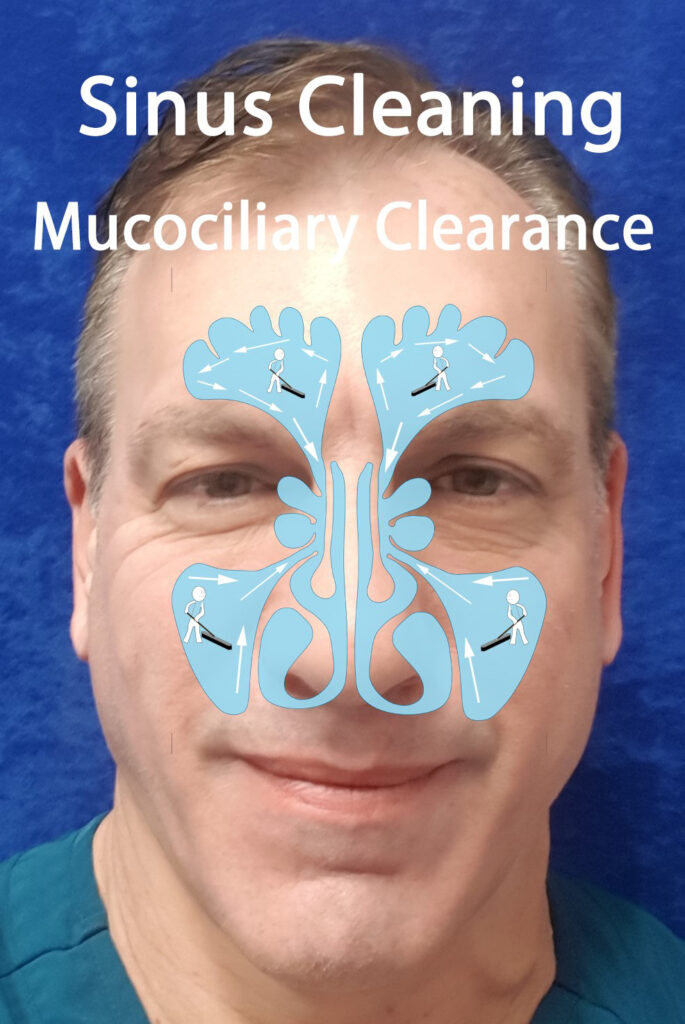Mucociliary clearance is the way in which our sinuses clean themselves out. This occurs on a daily basis. Mucous is produced from the cells on the mucous membranes that line the nose. These cells (on the mucous membranes) have little fingers (cilia) that sweep mucous out of the sinuses and out of the nose. The mucous is then pushed to the back of the nose, then swallowed and destroyed.

The sinuses are cavities or caves that each has a single narrowed opening. If opening swells shut, (from allergies, infection or an irritant) the Mucociliary clearance will not be able to clean out the sinuses. Debris, bacteria and viruses become trapped. This is thought to be how most sinus infections start.
Mucociliary clearance can be affected or stopped with certain conditions. Bacterial or viral infections damage the cells that perform the clearance. The damage can be temporary or permanent. Smoke, chemicals or other irritants will also stop clearance. Dehydration, or dusty conditions will affect the mucous, it will stop the production of mucous or the mucous becomes thick and sticky or is simply not produced. When the clearance stops, infection, headaches, congestion and drainage starts.


